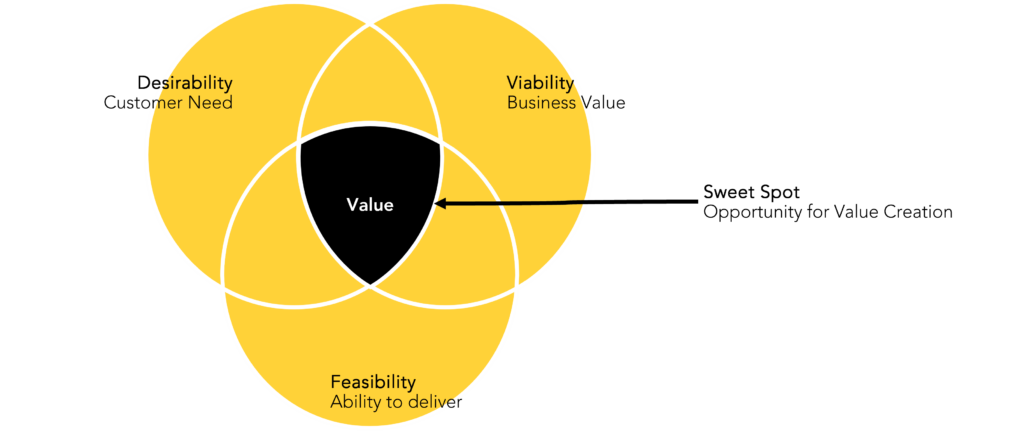Many companies strive to become customer centric, but what does customer centricity really mean?
Customer centricity means putting the customer first and in the center of everything we do, valuing the customer perspective in all aspects of the business. It requires a strong focus on understanding customers’ needs to be able to meet or exceed customer expectations.
Customer centricity is not to be mixed up with customer focus. Most companies would say they are focused on their customers, but customer centric companies go beyond – they strive to understand the customer in a more holistic manner.
This makes customer centric companies more adaptive to change and more resilient in a dynamic and competitive environment. In general, we can see that working customer centric results in higher revenue, increased customer satisfaction and more engaged employees.
20% increase in employee engagement
86% increased willingness to pay
84% increase in revenue*
*Source: Forbes.com – 50 Stats That Prove The Value Of Customer Experience
The journey towards a customer centric organization
We work with organizations trying to accomplish the shift, and there are many challenges we can see our clients facing. There is not a magical solution to these challenges, but we have gathered three key capabilities that will help you on the journey towards customer centricity.
Capability #1: Start with understanding
– understand why your customers choose to act the way they do
Most companies we meet know their customers quite well and have a lot of information about them. However, this data is often focused on what the customers do, rather than addressing why they do it. To effectively meet or exceed customer needs, it is essential to bridge this gap in understanding.
How?
To understand your customers, start by interacting with them on a regular basis to understand them in different situations along the customer journey.
Then, start to create customer insights, value the ones that are actionable and powerful. Integrate research and measurement, using both qualitative and quantitative data, and combine different methods to generate customer insights. This will give us the knowledge of what they are doing and why.
Make sure to visualize, share and communicate the insights. Sharing customer insights within the organization is crucial for continuous improvement. Our experience is, when insights are shared within the organization, they start to live a life of their own – in a good way.
Capability #2: Add customer value into prioritization
– develop a qualitative judgement ability to become insights driven
When we invest time and energy in understanding customers’ needs, we need the capability to align our actions accordingly or we won’t see any returns on our investments. Prioritization and decision making is key to become customer centric.
Many companies are deeply rooted in making decisions based on numbers. Measuring and numbers are of course essential in decision making, but adding qualitative judgement is necessary to adopt a more insight driven approach and making decisions based on insights.
How?
We are fond of the classical design thinking-model that considers Desirability, Viability and Feasibility. Historically when prioritizing, companies only considered the last two. But the sweet spot in value creation is found in the intersection, combining all three perspectives.
Begin with your customers’ needs – desirability – and start to value insights early in the process. This will prevent you from spending time and resources on developing and implementing things customers don’t need.
Then, we need to value the business perspective – viability – to make sure we are in line with business objectives.
Later in the process, add ability to deliver – feasibility – into prioritization. Adding this perspective too early in the process, before knowing which solution we’ll end up with, risk prioritization based on the wrong reasons.
The Sweet Spot of Value Creation

Capability #3: Come together to deliver
– bring different perspectives together by cross-functional collaboration
When we understand our customers’ needs and make customer centric decisions, we need the ability to deliver value to our customers. A problem is organizational charts often have employees working in silos and not realizing the importance of collaboration. We need to start working cross-functionally, forming the necessary collaborations to create customer value.
How?
The customer journey is a great starting point to break down silos and make internal dependencies visible. We can see with our own eyes how different parts of the organization contribute to deliver one holistic customer experience together. Also, use the customer journey as a tool to spread customer insights across the organization, making sure everyone has a shared understanding of the customers’ needs.
Naturally, culture and leadership are of great importance when striving to shift towards a customer centric organization. To create the right conditions for our employees to collaborate cross-functionally, but also to change our old behaviors. We need to accomplish the shift towards always keeping the customer needs at the center and bringing those needs into prioritization. We need leaders to pave the way for the changes in behavior necessary to adopt a customer centric way of working.
